| You may have noticed a bit of a gap since the last
page. That's because we decided to have some time off and do nothing for a
few days. We found a site at North Rustico on the north side of Prince
Edward Island and we just rested. We did go into North Rustico, three miles
each way and we walked. There we treated ourselves to lobster and scallops
for dinner. We read and soaked up the sun and caught up with the web pages. | 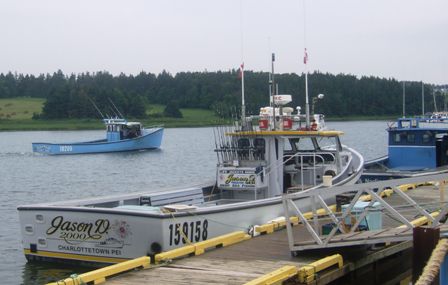 |
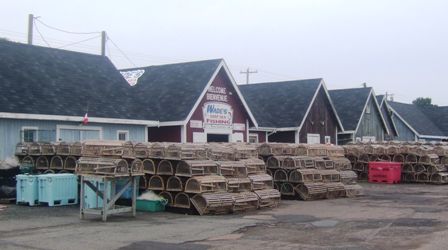 |
The small harbour is full of small fishing boats, mainly for lobster with
the pots seen here, but also some tourist fishing and some with long lines.
There is little there but Jan did find a hairdresser, so she is now
happier. |
| Some of the houses here are quite attractive. These
multi-shaped roofs in a Mansard style are common here. Most houses are clad
in wood. Balconies are common but it is the garden which made this one.
Gardens tend to be unfenced and very intensively planted but just in the immediate
area of the house. | 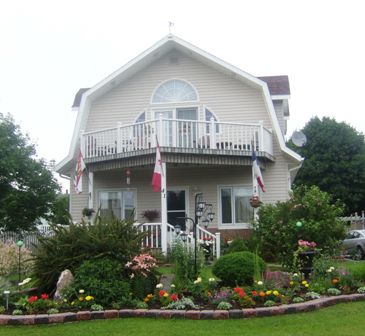 |
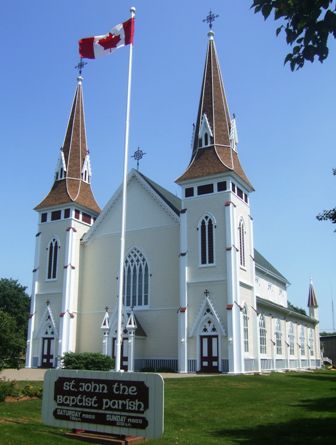 |
We finally moved off and travelled to Woodleigh (next page) and then on to
Miscouche.
The first Acadiens (French) settled in Malpeque Bay in 1732. To avoid
being deported by the British many left for the mainland in 1758 but some
returned to the island a number of years later, eventually settling in the Miscouche area
in the early 1800s. Over the years this has become somewhat of a gathering
point for them and this is their church. In 1859 they even reburied some of
their dead from Rivière-Platte
here in a communal grave at the entrance to the graveyard.
The first
church was built here in 1819 but this one, the third, was erected in 1895
when the Rev John McDonald was the parish priest. It is dedicated to St John
the Baptist and houses a Casavet organ installed in 1902. |
| St Joseph's convent was opened in 1864 and extended in
1922. Under the leadership of the Sisters of the Congregartion of Notre
Dame, it was the first convent school in PEI and New Brunswick. In 1866
about 90 girls attended the bilingual institution. Boys attended from 1914. | 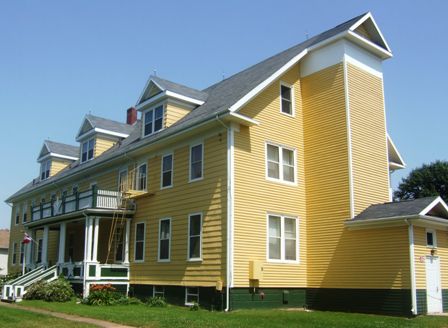 |
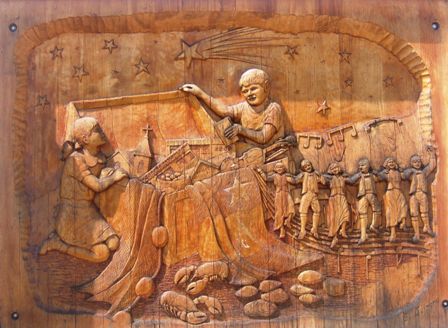 |
There is a small museum next door with a number of wooden murals on the
wall. This one includes dancers so we had to have a picture. The museum has
a film on the lives and troubles of the Acadiens and a small display of
their history and another of local inhabitants during the two world wars. |
| .One of the pictures shows a group of dancers from the
area. This was taken a few years ago and the group was called the
Evangelines, a name that crops up frequently in this area after the name was
used in a poem by Longfellow. | 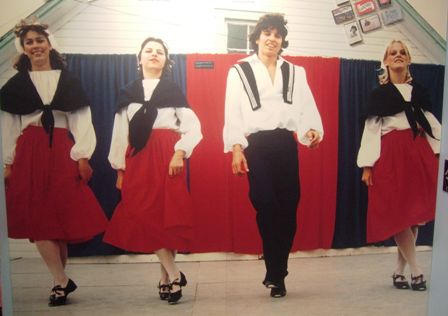 |
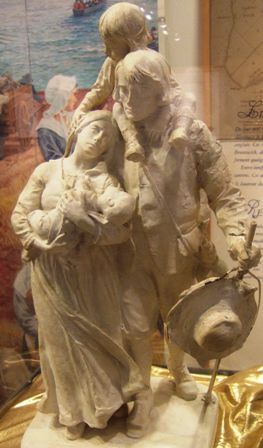 |
There are few actual exhibits but we did find this plaster of a family
probably about to be deported.
A(r)cadia was originally (1504) the French area of what is now Virginia,
but today refers mainly to the island of Nova Scotia. Prince Edward Island
was originally called Isle St Jean. In 1713 Nova Scotia became British as a
result of the Treaty of Utrecht. In 1755 the British deported all the French
they could find either, back to France or to other British North American
colonies. |
| The English did not exactly cover themselves with
glory in this act, using much brutality, burning their houses and
belongings, and often separating families. A large number lost their lives
when their ships sank on the return voyage to France. | 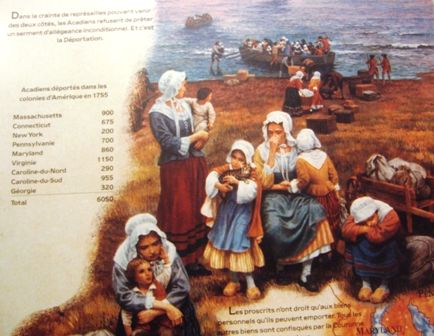 |
 |
Travelling on from Miscouche to Cornwall just outside the capital,
Charlottetown, where we planned to stay overnight, we decided to take the
scenic route. This is actually a numbered road on the map, and is one of
PEI's 'heritage roads', ie an original red dirt road. We began to get
worried as the trees closed in, and when we had grass in the middle of the
road..... But all was well and we had no troubles. We are not surprised
that this area is reputed to be haunted though. |
| The camp site at Cornwall is glorious and we had a
front row view over the water. This is a big site with lots of big RVs
probably staying for quite some time. There were a lot of
Florida/Carolinas/Georgia registrations. |  |
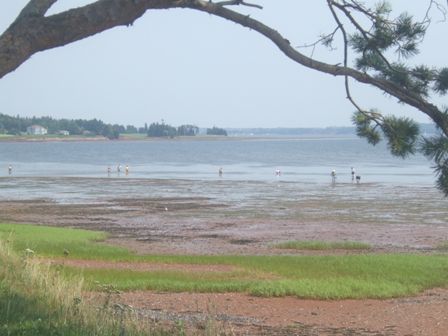 | The site Cornwall campsite is on a river estuary is
tidal and when the tide is out many campers are out digging for clams, which
you can only reach at low tide. |
|
Here we are alongside a small caravan and a large class A. The owner of the
latter is from Ontario but had travelled many places. | 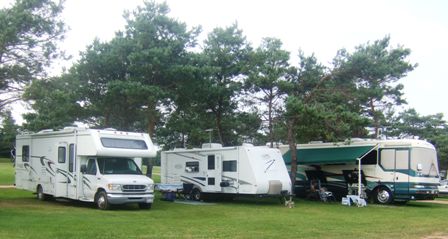 |
|